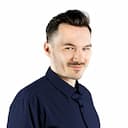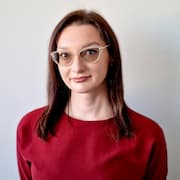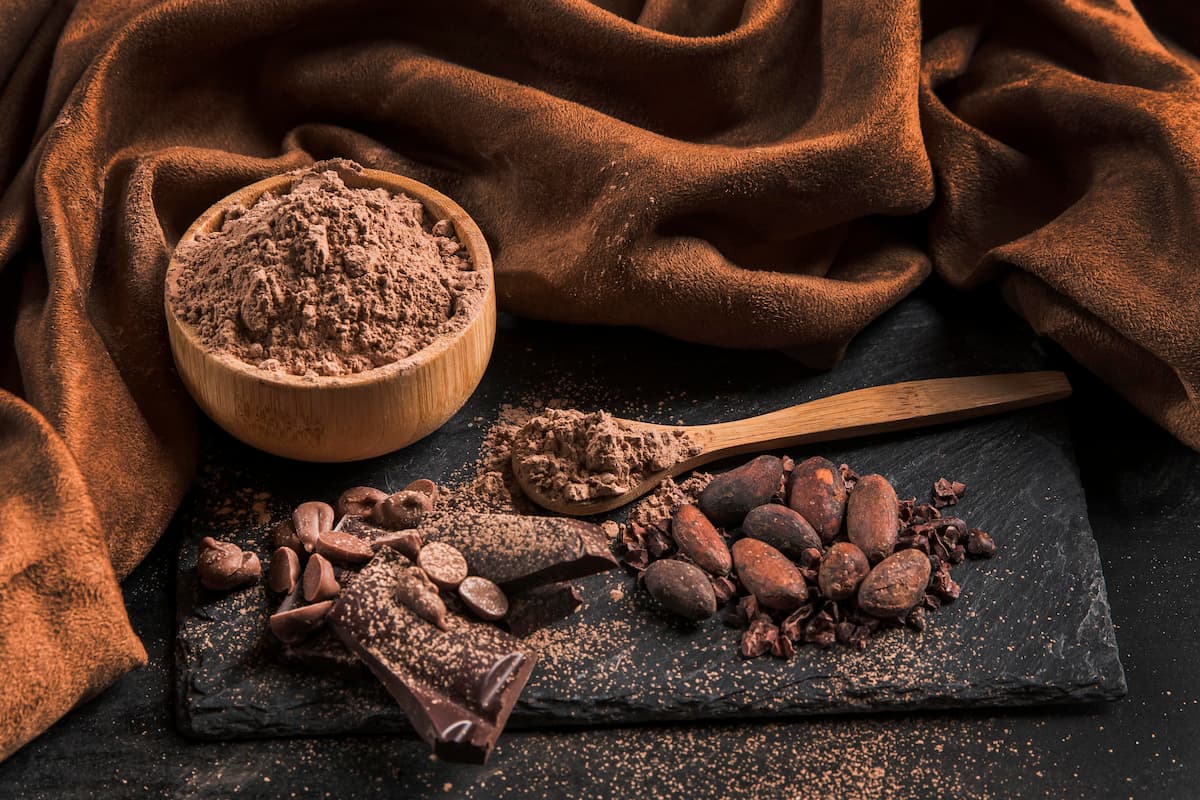Ceremonial cocoa: what it is, properties, effects, recipe, opinions
Ceremonial cocoa is distinguished by its natural production method and intense flavour.


Learn more about our editorial process
.

Learn more about our editorial process
.

Learn more about our editorial process
.

Learn more about our editorial process
.
Why you can trust us
Articles on Natu.Care are written based on scientific research, data from government websites and other reliable sources. The texts are written in cooperation with doctors, nutritionists and other health and beauty experts. Articles are reviewed before publication and during significant updates.
.Learn more about our editorial process
.Information about advertisements
Content on Natu.Care may contain links to products from the sale of which we may receive a commission. When creating content, we adhere to high editorial standards and take care to be objective about the products discussed. The presence of affiliate links is not dictated by our partners, and we select the products we review ourselves completely independently.
.Learn more about our terms and Conditions
.Ceremonial cacao gets its name from the ritual consumption practised hundreds of years ago by Central and South Americans.
Today you can drink it without the ceremony (although some do anyway), but it still provides the same valuable nutrients. And it smells amazing.
From this article you will learn:
- What ceremonial cocoa is different from regular cocoa and its nutritional value.
- What properties does ceremonial cocoa have?
- What properties ceremonial cocoa has and how to dose it correctly.
- How to use ceremonial cocoa.
- What is the recipe for ceremonial cocoa and who should not consume it.

Zobacz, co może zrobić dla Twojego zdrowia i urody Natu.Care Kolagen Premium 5000 mg -15% z kodem BLOG15
Natu.Care Kolagen Premium 5000 mg, kakao
Natu.Care Kolagen Premium dla zdrowia stawów, skóry, paznokci i włosów. Najlepsza przyswajalność. Optymalna dawka 5 000 lub 10 000 mg. Przebadany przez niezależne laboratorium.
Zobacz więcej
Efekty zaczęłam dostrzegać po około 5 tygodniach. Włosy są nawilżone, przestały też wypadać. Moja wrażliwa cera przestała się przesuszać. Plus za pyszny smak!@Milena Dlugosz
What is ceremonial cocoa?
.
Ceremonial cocoa is pure, fat-free and natural cocoa without any additives. Most often, the cocoa beans undergo only basic processing such as fermentation, drying and roasting (which is done at lower temperatures than other cocoa).
After roasting, ceremonial cocoa is sieved and ground into a paste. In this form, which resembles crumbly chocolate, it is most commonly found on sale. Another common form in which ceremonial cocoa is sold is in large blocks formed from cocoa beans.
Because ceremonial cocoa is not purified or subjected to invasive processing, it provides significantly more nutrients than classic cocoa. It is also distinguished by its bitter taste, as well as its high fat content.
Ceremonial cocoa versus regular cocoa - what are the differences?
.
Ceremonial cocoa differs from ordinary cocoa in several aspects. First and foremost, it is about the method of production, quality and taste. Ceremonial cocoa is usually sourced from the highest quality cocoa beans, which has a direct impact on its properties.
- Bean quality. The beans used to produce ceremonial cocoa are carefully selected. Only those of the highest quality go into production, resulting in a more intense, deeper cocoa flavour.
- Production process. Ceremonial cocoa undergoes a different production process than regular cocoa. The beans are gently roasted and ground to preserve as much of the natural nutritional value as possible. .
- Taste and health properties. Thanks to the unique production process, ceremonial cocoa contains more valuable ingredients and has a more intense, more 'cocoa-like' flavour.
- Price. Because of the higher quality beans and more complex production process, ceremonial cocoa tends to be more expensive than standard cocoa. .
Why is ceremonial cocoa... ceremonial?
.
The term 'ceremonial' refers to the historical use of cocoa in many cultures. Particularly in South and Central America, where cacao has been integral to numerous rituals and ceremoniesand.
In ancient times, mainly in the Mayan and Aztec civilisations, cacao was not just seen as a drink, but also a tool of deep spiritual significance. Therefore, it was drunk during religious ceremonies, festivals and even during political negotiations. Cacao was believed to have the power to unite the physical and spiritual worlds, as well as exhibiting healing propertiesand.
What was the cacao drinking ceremony like?
.
- Preparation. Cocoa was prepared by mixing ground cocoa beans with water and a variety of additives such as chilli, honey or herbs.
- Preparation.
- Dressing and offering. Performing the ceremony required appropriate dress and offerings to the deities. Sometimes prepared cocoa was poured over their statues.
- .
- Ritual drinking. The drinking of cocoa itself was a ritual - the beverage was consumed from painted vessels with symbolic meaning. They often featured scenes emphasising the sacredness of cocoa. It was drunk in deep gulps to produce foam - considered the most precious part of the drink.
.
More often than not, who could participate in the ceremony depended on a person's social standing. In many cultures, drinking cocoa was the privilege of only high-ranking citizens.
Today, however, cocoa is not a common drink.
Today, however, cocoa ceremonial refers to high-quality, unprocessed cocoa that may or may not be consumed in much the same way as it was hundreds of years ago.
What nutritional values does ceremonial cocoa have?
.
Ceremonial cocoa is an excellent source of valuable nutrients. Rich in protein, fats, minerals and chemically active molecules, it is a great addition to a healthy lifestyle. What exactly does it containand?
- Protein. Ceremonial cocoa provides protein, which is important for building and repairing cells and body tissues.
- Fats. Ceremonial cocoa is rich in healthy fats, particularly monounsaturated fatty acids. These are crucial for healthy heart and brain function.
- Fibre. Consuming ceremonial cocoa will provide you with valuable fibre, which helps maintain a healthy digestive system.
- Minerals. Ceremonial cocoa is also not lacking in minerals such as magnesium, calcium, zinc, iron and potassium. They help maintain healthy bones, teeth, skin, as well as the proper functioning of the muscles and nervous system.
- Theobromine. It is a natural stimulant that gives a mild feeling of stimulation, similar to caffeine, but without its typical side effects. Theobromine helps with concentration and lifts mood. .
- Polyphenols. These are powerful antioxidants that help protect the body from free radical damage. They also support the proper functioning of the heart.
What properties does ceremonial cocoa have?
.
Ceremonial cocoa, due to its natural and fine processing, has many beneficial properties. It exhibits antioxidant effects, supports the nervous system and even has a positive effect on mood. What effects can ceremonial cocoa have
.
Antioxidant effect
.
Ceremonial cocoa is full of polyphenols - powerful antioxidants that help protect your body from free radical damage. These compounds lead to oxidative stress, which is one of the main contributors to ageing and various chronic diseasesand.
Improves concentration
.
Because of its high theobromine content, ceremonial cocoa is a natural stimulant that helps improve concentration. It works similarly to caffeine, but there is no risk of its negative side effects. Theobromine can also help lower blood pressure and improve heart functionand.
increases energy and improves mood
.
Ceremonial cocoa contains ingredients such as phenylethylamine (PEA) and anandamide, which have a positive effect on your mood. PEA increases the production of mood-enhancing endorphins, while anandamide is known as the 'happiness molecule' and helps increase feelings of joy and euphoriaand.
Promotes the digestive system
.
Ceremonial cocoa will provide you with a high amount of fibre, which is essential for a healthy digestive system. Fibre helps regulate bowel function, providing a feeling of satiety and supporting a healthy bowel cycleand.
Smooths skin
.
Ceremonial cocoa is rich in antioxidants, which can help improve the appearance and health of the skin. Antioxidants neutralise free radicals, which can cause damage to skin cells and accelerate the ageing process. What's more, ceremonial cacao also contains numerous vitamins and minerals, which are also essential for healthy skinand.
How to dose ceremonial cocoa?
.
The dosage of ceremonial cocoa depends on your taste preferences, but as a standard it is advisable to start with smaller amounts. Over time, you can adjust the portions, taking into account your individual needs and feelings.
Remember that ceremonial cocoa is stronger in flavour than regular cocoa and can therefore produce more intense effects. Therefore, be cautious with your initial dosage.
Please note.
After a few days, you can increase the dose to 1 tablespoon (15 g).
|
|
Initial rate |
Average rate |
Advanced rate |
|||
|
Quantity of cocoa |
Start with 1 teaspoon (5g) per day. |
After a few days, you can increase the dose to 1 tablespoon (15 g). |
||||
|
Dosage |
||||||
| . |
Cocoa can be added to coffee, milk or fruit cocktails. |
Cocoa can be added to coffee, milk or fruit cocktails. |
It is worth mixing it with hot milk for a better flavour. |
Consume as part of your diet, adding to desserts, cereals or smoothies. |
Consume as part of your diet. |
|
|
Moment of consumption . |
Preferably in the morning on an empty stomach.
|
It is best taken in the morning on an empty stomach. |
It is still advisable to drink it in the morning, but you can also consume it during the day. |
Better in the morning. |
Consume at any time, depending on your personal preference. |
How to make ceremonial cocoa - recipe
.
Ingredients
- 2 tablespoons ceremonial cocoa (approximately 20 g) .
- 1 cup warm water or plant milk .
- Optional: natural sweetener to taste (such as honey, maple syrup or stevia), spices (such as cinnamon, cardamom or chilli) .
Preparation
.
- Grind or chop the cocoa into small pieces (depending on the form you choose). This will make it easier to dissolve it further.
- Pour in the water or milk.
- Pour the water or milk into a small pot and heat over moderate heat. .
- When the liquid is warm, add the cocoa and stir until it has completely dissolved. Alternatively, you can use a hand blender to speed up the process and give the drink a creamier consistency.
- When the cocoa is dissolved, add your favourite spices. .
- Cook over a low heat for a few minutes until the flavours combine. .
- Pour into a mug and...done! .
See also: Cocoa with Collagen by Natu.Care
What are the contraindications to consuming ceremonial cocoa?
.
Ceremonial cocoa, despite its many health benefits, is not safe for everyone. Some people should simply shy away from it.
Contraindications to consuming ceremonial cocoaand:
.
- .
- Allergies and intolerances. People with allergies to cocoa or chocolate should avoid ceremonial cocoa. If, after consuming it, you have symptoms such as a rash, swelling or difficulty breathing, this may indicate an allergy.
- Low blood pressure. Cocoa contains theobromine, which acts as a vasodilator and can lower blood pressure. Therefore, people struggling with already low blood pressure should be cautious. .
- Gastric reflux. Ceremonial cocoa may delay gastric emptying, which may worsen the condition of those suffering from gastric reflux or stomach ulcers.
- Interaction with medications. Cocoa may interact with some medications, including selected antidepressants and agents for heart disease. Therefore, if you are taking any medications, consult your doctor before adding ceremonial cocoa to your diet.
Is it okay to drink ceremonial cocoa during pregnancy?
.
Yes, ceremonial cocoa is generally safe to consume during pregnancy. But only if it is drunk in moderation. Due to its high nutrient content, cocoa can even be a valuable addition to a pregnant woman's diet.
Pregnant women should be aware of this.
Remember, however, that ceremonial cocoa contains natural stimulants such as theobromine and caffeine. Research suggests that caffeine intake should be limited to around 200 mg per day during pregnancy. Therefore, if you are going to consume this beverage, control the caffeine contentand.
Ceremonial cocoa is also high in fat, which means it is relatively high in calories. Of course, pregnancy is a time when a woman's body needs extra kilocalories, but it's always worth remembering to eat a balanced diet.
Ceremonial cocoa and breastfeeding
.
While breastfeeding is very similar to pregnancy - you can drink ceremonial cocoa, but be careful and do it in moderation. The caffeine you take in while breastfeeding crosses over into your milk, so it's a good idea to limit your intake. Here, research says 200-300 mg of caffeine per day for a breastfeeding mother.
Ceremonial cocoa - user reviews
.
I must admit that I am surprised. At first I thought it was ordinary cocoa, but the aftertaste is different, more sophisticated. It tastes good to me..
Jan57 years old
I bought this cocoa for a change and was not disappointed. The taste is intense with a slight hint of dark chocolate. I will definitely buy again..
Kamila32 years old
I'm a bit disappointed. I was expecting something unique, but in the end the taste wasn't much different from normal cocoa.
.
Sebastian42 years old
.
Normally I'm not a big fan of cocoa, but ceremonial is something I've been looking for a long time. It has a great balance of sweetness and bitterness..
Bartek45 years old
.The ceremonial cocoa is not for me. It tasted strange and very bitter. Maybe I'm too used to regular cocoa, but it's definitely not something I'd want to repeat..
Agata35 years old
See recipes with Natu.Care collagen:
.
Summary
.
- Ceremonial cocoa is an unmodified, non-fattened and natural form of cocoa, which contains significantly more active ingredients than the classic product.
- Ceremonial cocoa is an unmodified, non-fattened and natural form of cocoa, which contains significantly more active ingredients than the classic product.
- It is most often available in the form of crumbly "chocolate" or large blocks. .
- It is distinguished by its specific, bitter taste and high fat content.
- Ceremonial cocoa differs from regular cocoa in its production process, the quality of the beans and its more intense flavour.
- It is a source of protein, healthy fats, fibre, minerals, theobromine and antioxidants.
- Ceremonial cocoa has antioxidant effects, can improve concentration, support mood, support digestive function and positively influence skin condition. .
- Use it in moderation, starting with small doses and gradually increasing portions. .
- Ceremonial cocoa can be dangerous for people with cocoa allergies, low blood pressure, or gastric reflux. .
- In general, ceremonial cocoa is safe for pregnant and lactating women, but moderate consumption is recommended due to its caffeine content. .
- User feedback on ceremonial cocoa is mixed - some people like its aroma, while others prefer the taste of classic cocoa.
FAQ
.Can ceremonial cocoa be consumed on a daily basis?
.Yes, you can consume ceremonial cocoa on a daily basis, just like traditional cocoa. Remember, however, that it has a stronger taste, so it is advisable to start with smaller doses and gradually increase them as your body adapts.
Is ceremonial cocoa suitable for vegans?
.Yes, ceremonial cacao is ideal for vegans. The product is 100% plant-based and does not contain any additives of animal origin. This means that it fits perfectly into a plant-based diet, providing the body with important nutrients.
Can I consume ceremonial cocoa if I have a heart condition?"
.Yes, but in moderation. Ceremonial cocoa contains theobromine, a natural stimulant that acts as a vasodilator and can lower blood pressure. For those with pre-existing hypotension, this can mean an excessive lowering of blood pressure and consequent malaise.
Does ceremonial cocoa improve mood?
.Yes, the consumption of ceremonial cocoa can have a positive effect on mood. This cocoa contains ingredients such as phenylethylamine, which stimulates the production of mood-enhancing endorphins, as well as anandamide, known as the 'happiness molecule'. These ingredients can help to increase feelings of joy and euphoria.
Is ceremonial cocoa suitable for children?
.Considering the natural composition and health benefits, ceremonial cocoa can be given to children (over 2-3 years old), however, due to its stronger taste, it may not appeal to the youngest.
What is more, it is also recommended to introduce it slowly into a child's diet, starting with very small doses. It is worth bearing in mind that ceremonial cocoa contains theobromine, which is a natural stimulant and can make children more energetic.
They should also be aware that ceremonial cocoa contains theobromine, which is a natural stimulant and can make children more energetic.
Is there caffeine in ceremonial cocoa?
.Yes, although in much smaller amounts than in coffee or tea. Ceremonial cocoa will also provide you with theobromine, another stimulant that has a similar effect on the body as caffeine - it helps to increase concentration and improve mood. Therefore, although ceremonial cocoa is not as strong as coffee, it can still provide a mildly stimulating effect.
Where can I buy ceremonial cocoa?
.You can find ceremonial cocoa in health food shops, some supermarkets and online shops. It is important to pay attention to the product label when buying and make sure that the cocoa is 100% natural and contains no additives.
.
Sources
.See all
.Ellam, S., & Williamson, G. (2013). Cocoa and human health. Annual Review of Nutrition, 33, 105-128. https://doi.org/10.1146/annurev-nutr-071811-150642
Katz, D. L., Doughty, K., & Ali, A. (2011). Cocoa and Chocolate in Human Health and Disease. Antioxidants & Redox Signaling, 15(10), 2779-2811. https://doi.org/10.1089/ars.2010.3697
Latif, R. (2013a). Chocolate/cocoa and human health: A review. The Netherlands Journal of Medicine, 71(2), 63-68.
Latif, R. (2013b). Health benefits of cocoa. Current Opinion in Clinical Nutrition and Metabolic Care, 16(6), 669-674. https://doi.org/10.1097/MCO.0b013e328365a235
Martín, M. A., Goya, L., & de Pascual-Teresa, S. (2020). Effect of Cocoa and Cocoa Products on Cognitive Performance in Young Adults. Nutrients, 12(12), 3691. https://doi.org/10.3390/nu12123691
Martin, M. Á., & Ramos, S. (2021). Impact of cocoa flavanols on human health. Food and Chemical Toxicology: An International Journal Published for the British Industrial Biological Research Association, 151, 112121. https://doi.org/10.1016/j.fct.2021.112121
Ford, A., Williams, A., & de Vries, M. S. (2022). New light on the use of Theobroma cacao by Late Classic Maya. Proceedings of the National Academy of Sciences of the United States of America, 119(40), e2121821119. https://doi.org/10.1073/pnas.2121821119
Pucciarelli, D. L. (2013). Cocoa and Heart Health: A Historical Review of the Science. Nutrients, 5(10), 3854-3870. https://doi.org/10.3390/nu5103854
Scapagnini, G., Davinelli, S., Di Renzo, L., De Lorenzo, A., Olarte, H. H., Micali, G., Cicero, A. F., & Gonzalez, S. (2014). Cocoa Bioactive Compounds: Significance and Potential for the Maintenance of Skin Health. Nutrients, 6(8), 3202-3213. https://doi.org/10.3390/nu6083202
Zimmermann, B. F., & Ellinger, S. (2020). Cocoa, Chocolate, and Human Health. Nutrients, 12(3), 698. https://doi.org/10.3390/nu12030698
Antioxidants in Cocoa-PMC. (n.d.). Retrieved 6 September 2023, from https://www.ncbi.nlm.nih.gov/pmc/articles/PMC7761840/
Martín, M. A., Goya, L., & de Pascual-Teresa, S. (2020). Effect of Cocoa and Cocoa Products on Cognitive Performance in Young Adults. Nutrients, 12(12), 3691. https://doi.org/10.3390/nu12123691
.
Editorials
Meet the team



Ashwagandha affects thyroid hormone levels. Find out if you can use it.

See how mountain pintail can affect your wellbeing.

Check out the opinions of doctors and other professionals about ashwagandha. Also find out what people on the forum think about it.
